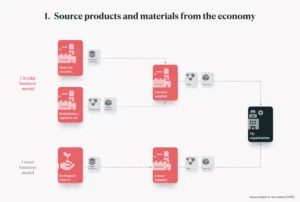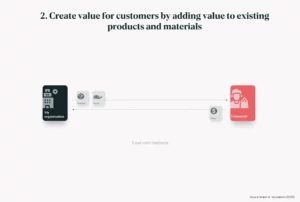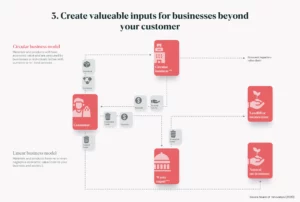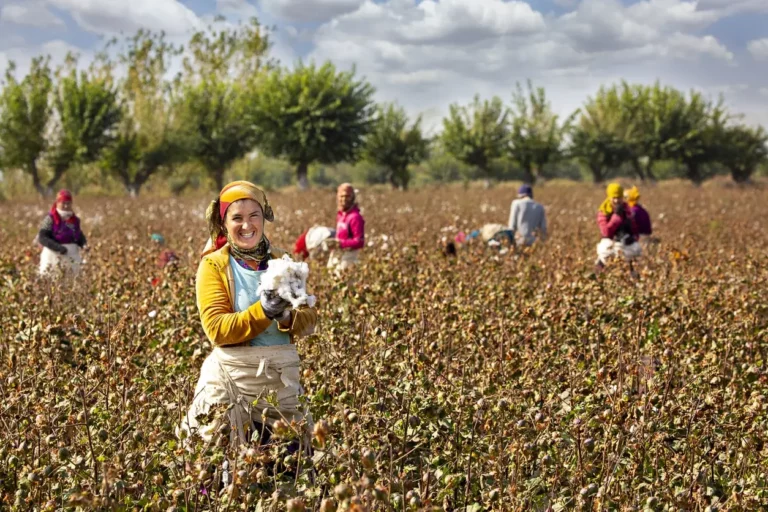All business models involve suppliers and customers. A linear business model focuses exclusively on these two sets of stakeholders. With this framework in mind, neither the origin of supplied materials nor the post-consumption waste of said materials is regarded. Thus, the nature of the linear business model is purely transactional. It does not aim to create value for stakeholders and businesses further down the value chain (i.e. recyclers, repair shops, collectors), nor does it consider the impact on the natural environment.
In terms of timeframe, linear business models generally aim to create value for a short period. Maintaining and restoring value over time are not priorities, meaning product/service value gradually and inevitably erodes for the customer. When customers no longer benefit, they discard the products, and because downstream economic value was never intended, no other business can use discarded products as feedstock, thus generating waste.
“But what if there was a business model that considered the value of a product through its entire lifecycle, from pre-production to post-consumption?” you may be asking yourself. Alas, there is! It’s called a Circular Business Model, and it’s not just a trend, but the future of the globalized economy. We’ve highlighted three principles of creating a circular business model, below.
Source from the economy

Source products and materials that already exist within the economy, not from ecological reserves. Opt for suppliers providing recycled materials, or reused parts or products, rather than virgin stuff.
Add value to existing products and materials

Create value for customers by adding economic value to existing products and materials.. This tends to involve a combination of restorative technological processes (like upgrading, upcycling, repair, sorting, or processing) and design processes (like branding or incorporation into a service).
Create valuable inputs for businesses

The economy doesn’t stop at your customer. If the materials and products you sell have no value or purpose after your customer is done using them, they become waste, and thus become a cost to society, and beyond that – our environment. Strive to create value for downstream businesses, so they can adhere to principle 1. In this respect, the natural environment counts as a stakeholder.

If you adhere to all the principles, you’re circular.
If you adhere to none of the principles, you’re linear.
If you adhere to some but not all of the principles, you’re mixed.

Learn more about circular business models
We offer practical resources to innovate to reach a circular economy business model.


